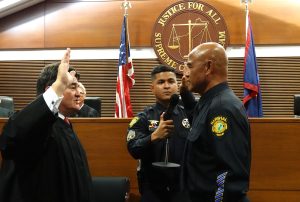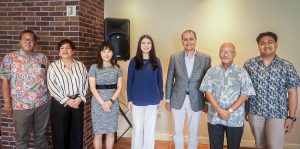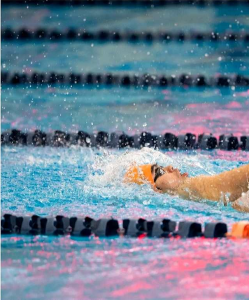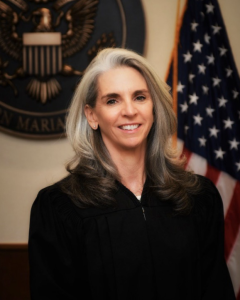Apatang asks military to join LibDay parade
Saipan Mayor David M. Apatang is asking the Military Liaison and Veterans Affairs Office to help them in securing a commitment from the military to join the Liberation Day parade this year. Saipan is celebrating the 71st commemoration of the island’s liberation under Japanese rule during World War II.
Apatang made the request to Military Liaison and Veterans Affairs Office executive director Gregorio Sablan Jr.
Apatang, who also served in the US Armed Forces, said Sablan would help them in inviting the military to be part of the parade on July 4, a Monday. He added that there are already 17 soldiers in the CNMI who have committed to march in the Liberation Day parade.
“It would be nice if the Guam National Guard marching band could join the parade since we are also promoting to have our own National Guard. And some of our own are also serving in the Guam National Guard,” said Apatang.
They are also waiting for the approval from high-ranking U.S. military officials to allow them to have some equipment to be used for the parade.
“We are still ongoing with the preparations for the Liberation Day festival. There are still a lot of things needed to be done,” added Apatang.
The Liberation Day committee and the Saipan Mayor’s Office are still trying to secure lowboys from construction companies that will be used for floats in the parade.
Skywalker Communications Group is working on the entertainment side of the Liberation Day Festival where they are preparing the line up and schedule of performers for the month-long celebration.
The committee is also suggesting that the carnival grounds for the 2016 Liberation Day be open until 10m on weekdays and 11pm every weekends.
The carnival is set to open on June 10 where the committee has also opened up the concession of operating carnival rides to any group or individual. The committee, at first, decided to scrap the carnival rides.
The 2016 Liberation Day has “Our Islands, Our Heritage” as its slogan.







Honestly, this is getting tiresome. Liberation Day DOES NOT “celebrate the commemoration of the island’s liberation under Japanese rule during World War II.”
Liberation Day in GUAM is about liberating the people from Japanese occupation. Guam was part of the U.S. when it was attacked and occupied by Japanese forces.
Liberation Day in the CNMI commemorates the release of the indigenous people from internment camps on July 4th. The local people were put in these camps after U.S. forces attacked and defeated the Japanese in Saipan, which was a Protectorate of Japan under the authority of the League of Nations.
In other words, the U.S. did not liberate the local indigenous people. They put them in internment camps because they were part of the defeated enemy population.
If anything, releasing them from the internment camps is was liberating them from U.S. imprisonment. It did not set them free either since immediately after the war, the US Navy “administered” these islands until the United Nations created the Trust Territory of Micronesian Islands and the security council authorized the US to be the administrators and the Navy continued administration from Guam.
The U.S. is no different from Japan in how they came to the Northern Marianas. Both attacked foreign occupiers of these islands and then took control of the islands themselves. Japan attacked German occupied Northern Mariana Islands and only later got the League of Nations to officially okay their taking of the islands. The U.S. attacked Japanese occupied Northern Mariana Islans and only later go the United Nations to officially okay their “administration” of the islands.
True “liberation” would have been to allow the people of the Northern Marianas to live in peace without putting them under foreign control. Eventually the United Nations pressured the U.S. to allow the people of the Northern Mariana Island to decide their political fate. That was the true “liberation” of the people – something the indigenous people of Guam, who are the same race and families as the people of the NMI, have never experienced.
Please get these things straight once and for all so that readers are properly informed about the history of the relationship between the people of the Northern Mariana Islands and the United States.